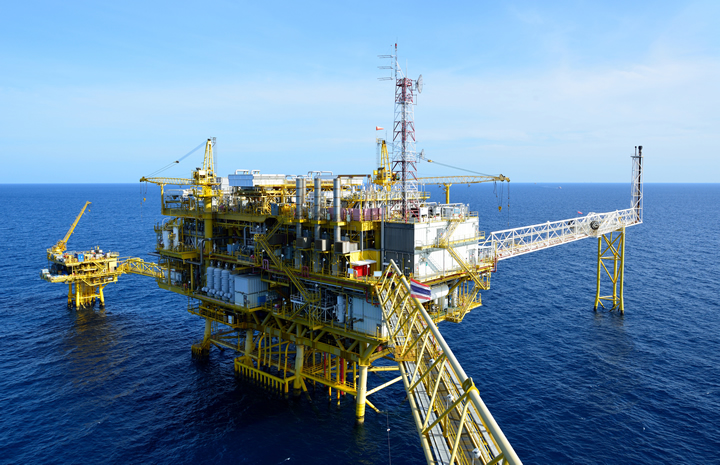Explosion-Proof Robotics in ATEX/IECEx Environments: Progress, Challenges and Practical Pathways

Industrial robotics has transformed manufacturing, logistics and maintenance across countless sectors. Yet in potentially explosive environments such as refineries, petrochemical plants, offshore platforms and battery production facilities, the picture changes dramatically. Any spark, hot surface or uncontrolled electrical discharge can trigger catastrophic ignition. These facilities operate under rigorous certification regimes such as ATEX (Europe) and IECEx (international), where deploying robots demands far more than standard industrial automation.
Understanding Hazardous Zone Classifications
ATEX and IECEx define zones based on how frequently an explosive atmosphere is present:
Gas, Vapour and Mist Zones:
- Zone 0: Explosive atmosphere present continuously (>1000 hours/year)
- Zone 1: Likely during normal operation (10 to 1000 hours/year)
- Zone 2: Unlikely, short duration only (<10 hours/year)
Combustible Dust Zones:
- Zone 20: Continuously present (>1000 hours/year)
- Zone 21: Likely during normal operation (10 to 1000 hours/year)
- Zone 22: Unlikely, short duration only (<10 hours/year)
Every robot component must be designed and certified for its intended zone. A robot certified for Zone 2 cannot operate in Zone 1; an entire redesign for Zone 1 must be made.
The Technical Challenge
Making a robot explosion-proof requires addressing multiple protection layers:
Examples of protection methods:
- Intrinsic safety (Ex i): Limits electrical energy to levels incapable of igniting gases, even during faults
- Flameproof enclosures (Ex d): Contains internal explosions and prevents flame propagation
- Pressurization (Ex p): Maintains protective gas pressure to exclude explosive atmospheres
Mechanical Requirements:
- Surface temperatures below ignition thresholds (typically <135°C for T4 classification)
- Special materials and treatments to prevent friction sparking
- IP65 or higher enclosure ratings to prevent dust ingress
- Individual certification for every sensor, camera and payload
Certification Complexity:
Each configuration change (sensor additions, software updates, payload modifications) can trigger recertification. Testing cycles extend 6 to 12 months. Any unauthorized field modification voids certification immediately. This rigid process protects lives but creates significant deployment friction.
The Cost Reality
According to Robots.com, a typical industrial robot with controller costs USD 50,000 to 80,000. Complete systems reach USD 100,000 to 150,000.
ATEX-certified robots tell a different story. SP Automation & Robotics reports that Zone 1 certified systems can reach USD 200,000 for the robot alone, before integration costs. This represents a 3 to 4 times multiplier over comparable standard systems.
The broader context: the global explosion-proof equipment market was valued at USD 9.96 billion in 2025 (GM Insights), with the industrial robotics market at USD 47.8 billion (GM Insights, 2024). Explosion-proof robotics remains a specialized, high-cost segment serving critical safety applications.
What Exists Today
Despite challenges, certified systems are operating commercially:
Crawler Platforms (Zone 1 certified) combine autonomous navigation, stair-climbing and integrated sensors. They carry thermal cameras, gas detectors and visual inspection equipment for routine monitoring in petrochemical facilities and offshore platforms.
Quadruped Robots navigate multi-level facilities with stairs, grating and obstacles. Using pressurized enclosures and intrinsically safe actuators, they access areas where wheeled platforms cannot reach and scaffolding would be prohibitively expensive.
Tracked Inspection Systems focus on routine patrol workflows. Certified for continuous Zone 1/21 operation, they integrate LiDAR, GPS, gauge-reading vision systems and gas sensors. Battery life reaches 90 to 120 minutes with autonomous docking capability.
Collaborative Arms bring manipulation capability to batch processing and sampling operations in Zone 1 and Zone 2 environments, enabling material handling within hazardous production zones.
Why Full Robotics Remain Selective
Economics: A standard cobot costs USD 25,000 to 60,000 (Standard Bots, 2025). An ATEX equivalent costs 3 to 5 times more. The business case closes only for critical asset monitoring, emergency response or replacing repeated human entry into high-risk zones.
Integration: Each deployment requires site-specific explosion documentation, control system integration, specialized training, annual inspection protocols and coordination with certifying bodies.
Maintenance: Opening enclosures or updating software without proper procedures voids certification. Annual maintenance typically costs 10 to 15% of purchase price (Standard Bots), potentially higher for explosion-proof variants due to specialized inspection requirements.
Ecosystem: Few suppliers offer Ex-certified sensors, cameras or end-effectors. Software tools lag mainstream robotics platforms. This immaturity increases cost and risk.
Practical Inspection Solutions: Comparing the Options
For routine inspection in hazardous zones, facilities have several approaches. Each has distinct tradeoffs:
Inspection Method Comparison
Traditional Scaffolding:
- High cost (USD 10,000 to 50,000+ per setup)
- Weeks of planning and permit delays
- Significant safety risks during construction
- Work interruptions to operations
- Visual access limited to scaffold positions
Explosion-Proof Drones:
- Flight time limited (15 to 30 minutes typical)
- Weather and wind sensitivity
- Restricted indoor operation
- Requires trained pilots with Ex certification
- Annual certification costs
- Limited payload for inspection tools
Full Robotic Systems:
- High initial investment (USD 150,000 to 250,000+)
- 6 to 12 month deployment timeline
- Extensive integration and training requirements
- Excellent for autonomous routine monitoring
- Best ROI for continuous, repeated inspection tasks
Certified Inspection Cameras:
- Low initial investment
- Immediate deployment capability
- Pole-mounted or handheld operation
- Zone 2/22 certification available
- No specialized pilot training required
- Excellent image quality and documentation
- Combines with Ex-certified smartphones/tablets
- Reduces scaffolding by 60 to 80% for visual tasks
When Cameras Excel
Certified ex inspection cameras prove particularly valuable for:
- Close-up visual documentation of equipment, welds and connections

- Thermal imaging to identify hot spots and insulation failures
- Accessing confined spaces through manholes and access ports
- Rapid response to potential issues without mobilization delays
- Building inspection documentation libraries over time
- Training personnel on equipment conditions
This approach builds organizational competency in managing Ex-certified equipment while identifying where full robotic automation delivers clear ROI.
The Path Forward
Modular Certification is emerging where core platforms receive approval and certified modules can be added without full system recertification. This mirrors how certified instruments can be added to control systems within defined parameters.
Hydrogen Economy Growth creates urgency. Hydrogen's wide flammability range and low ignition energy create extensive Zone 0 and Zone 1 areas, intensifying demand for Ex-certified automation across energy infrastructure.
AI Integration from mainstream robotics (global market projected at USD 553 billion by 2033, per Renub Research) is enabling greater autonomy without constant connectivity. Adapting AI to intrinsic safety requirements will prove essential.
Component Markets signal ecosystem maturation. Explosion-proof servo motors alone represent USD 2.81 billion in 2024, growing to USD 3.94 billion by 2032 (The Market Intelligence).
Standardization Efforts through IEC and ATEX committees aim to harmonize requirements across regions, creating larger markets that justify supplier investment.
Conclusion: A Staged Approach
Explosion-proof robots certified to ATEX/IECEx standards operate today performing inspection, monitoring and emergency response in refineries, petrochemical facilities and offshore platforms. The technology works. Autonomous navigation, sophisticated sensing and mechanical manipulation are proven within intrinsic safety constraints.
Yet a robot costing USD 50,000 to 80,000 in standard form reaches USD 150,000 to 200,000+ when ATEX-certified, before integration, training and specialized maintenance. Deployment remains justified primarily where safety imperatives and operational criticality outweigh substantial costs.
The practical pathway:
- Start with certified inspection tools: Cameras, sensors and handheld instruments build internal expertise managing Ex-certified equipment while delivering immediate safety and documentation benefits.
- Identify high-value automation opportunities: Where does repeated human entry create unacceptable risk? Which assets justify continuous autonomous monitoring?
- Deploy purpose-built robotic platforms where the business case clearly closes: critical asset monitoring, emergency response capability or operations where inspection costs and safety risks demand automation.
The technology is ready. The question each facility must answer: where does the combination of safety imperative, operational efficiency and economic justification make explosion-proof robotics the right solution today?
For many organizations, the answer begins not with robots, but with certified inspection devices that prove the value of Ex-certified automation one application at a time.
Armadex Explosion Protection B.V.
Armadex Explosion Protection B.V. is a Dutch manufacturer of ATEX and IECEx-certified equipment, dedicated to making hazardous areas safer, smarter, and more efficient through innovative technology.
Featured Product

